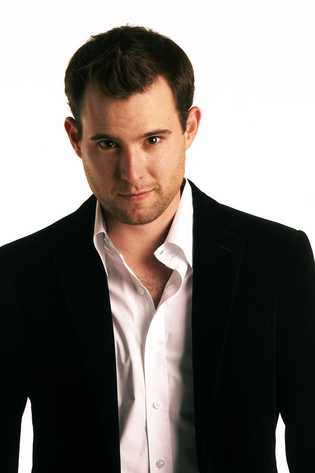Seraphic Fire brings the English Renaissance to stirring life in wide-ranging program

Patrick Quigley led Seraphic Fire in a program of English music Wednesday night at St. Jude Melkite Church in Miami.
Renaissance choral music has long been a mainstay of Seraphic Fire’s repertoire. After surveying the Spanish Renaissance at its season opener in October, the chamber choir presented “The Tudors: A Musical Tapestry” Wednesday night at St. Jude Melkite Catholic Church in Miami. Artistic director Patrick Quigley offered a generous selection of works by English Renaissance composers spanning the reign of the Tudor monarchs.
The music of John Sheppard bookended the program. Sheppard’s austere setting of The Lord’s Prayer contrasted with the elaborate polyphony of Libera nos, Salva nos (Free us, save us), a 17-part motet. With the lower male voices setting the bass line, the soaring vocal timbres of the high sopranos suggested some higher power and spirit. Sheppard’s I give you a new commandment is a deeply reverent, solemn anthem for low voices.
O Maria Salvatoris (O Mary, mother) by John Browne was the evening’s most ambitious work, a fifteen-minute choral fantasia of almost symphonic proportions. Browne, who composed during the reign of Henry VII, anticipated the antiphony and grandeur of the Baroque era by over a century. Rich in harmonic invention and choral scale, the score was a terrific showcase for the choir’s corporate precision and gleaming sonority.
Christopher Tye was the favored composer and musical tutor to the more notorious King Henry VIII. Tye’s Agnus Dei was both moving and stirring, the choral sound wonderfully fluid and beautiful. Robert Parsons’ spare setting of the Ave Maria was particularly lovely, the unison voices blending felicitously in the sanctuary’s vibrant acoustic.
Thomas Tallis was the senior statesman of Tudor composers whose creative output encompassed nearly the entire era. Best known for the melody Vaughan Williams adapted for his string fantasia, Tallis was a master of choral texture and harmony. The sheer melodic beauty of Tallis’ If Ye Love Me and contemplative serenity of his Candidi facti sunt proved memorable amidst this cornucopia of Tudor glories.
Like Tallis, William Byrd was a Catholic in an era of Anglican monarchy. Still Tallis and Byrd were favored by Queen Elizabeth I with exclusive English publishing rights. Byrd reciprocated with O Lord, make Thy servant Elizabeth, an early example of political correctness. Byrd’s Quis est homo is a strikingly original score, the dissonances in the vocal line surprisingly modern.
Unlike Tallis and Byrd, Peter Phillips was forced to flee England for his embrace of Catholicism. Eventually settling in Rome, Phillips adapted the stylistic character of Italian Renaissance music. Phillips’ Beata Dei Genetrix (The Blessed Mary), scored for double choir, is replete with the lively melodic invention and imaginative antiphonal effects of Monteverdi.
Quigley brought tremendous enthusiasm and scholarly mastery to this unique program. His ability to sustain the long arc of the vocal line conveyed the sacred and joyous spirit of the English choral liturgy. The transparency of choral sound and vocal beauty of the entire ensemble were splendid. This intimate program presents Seraphic Fire at its considerable best and should not be missed by connoisseurs of choral and Renaissance music.
Seraphic Fire repeats “The Tudors: A Musical Tapestry” 7:30 p.m. Thursday at St. Gregory’s Episcopal Church in Boca Raton, 7:30 p.m. Friday at All Saints’ Episcopal Church in Ft. Lauderdale, 8 p.m. Saturday at First United Methodist Church in Coral Gables and 4 p.m. Sunday at Miami Beach Community Church. 305-285-9060 www.SeraphicFire.org.
Posted in Performances
Leave a Comment
Thu Mar 15, 2012
at 1:16 pm
No Comments






